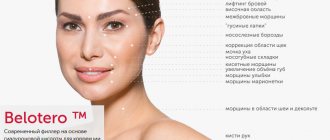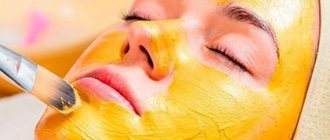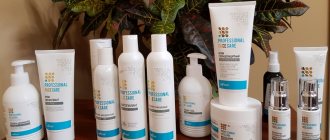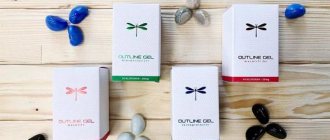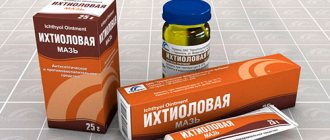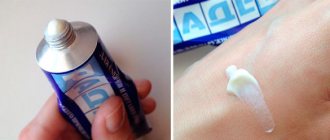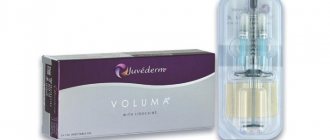Well, let's continue to look for a pill of eternal youth and beauty? Perhaps she will still be found on the pharmacy counter, in the department of inexpensive drugs. We have already smeared Radevit with solcoseryl, applied salicylic acid to the face, and crushed aspirin tablets. But there is still room for experimentation! Meet calcium chloride.
Calcium chloride is used in medicine for injection in the treatment of
- allergies,
- inflammation, inflammation
- as a hemostatic agent for internal bleeding,
- and in many other cases.
And mothers and breeders of purebred animals know this solution as a reagent for preparing calcined cottage cheese for children, puppies and kittens.
In cosmetology, this useful substance has found application as a peeling agent. Moreover, domestic cosmetologists have been using peeling with calcium chloride for many years, since the 90s, when it was called “skating ray” or “Hollywood peeling.”
Indications and contraindications
What results are they trying to achieve with the help of the “rolling”? This:
- drying and mattifying oily skin;
- narrowing and cleansing of pores;
- renewal of the upper layer of skin;
- smoothing out small redness and post-acne depressions due to acne (in the absence of fresh rashes and inflammations).
It should be noted that this type of peeling is used only for oily and thick skin. On combination skin it can be performed within the T-zone.
Contraindicated for thin, dry, sensitive skin!
Other contraindications are:
- allergy;
- herpes;
- wounds,
- inflammation, inflammation
- acne
The use of calcium chloride for these problems is strictly prohibited , since it can lead to irreversible changes in the skin - necrosis.
You should not try the product during pregnancy and lactation.
Back to the beginning of the article
results
This type of cleaning is not only very effective, but also a method proven by more than one generation. It was popular back in the days of the Soviet Union, and it cost a lot of money. Today you can easily do cleaning yourself, spending a minimum of your time and money.
Girls are often interested in what results can be seen after the first session. If you perform all the steps correctly, the pores will be significantly cleaned, blackheads will become less noticeable (and some will disappear altogether), the skin will lighten, its tone will even out, and inflammation will significantly decrease.
Side effects from the procedure may include dryness and slight pigmentation, which can be avoided by staying out of the sun for several hours after cleansing.
Procedure
For peeling, a pharmaceutical solution of calcium chloride and soap are used.
For the first time, it is better to take a 5% solution (you can buy 10% and dilute it half with boiled water). The soap you use is the simplest, natural, without fragrances, preferably laundry soap, baby soap or tar soap.
Apply the solution to the face with a cotton pad or sponge, rub to obtain a thin, even layer, and wait to dry. When applying, avoid the area above the upper lip and around the eyes.
Then - the next layer, and so on up to 7-8 times. The more layers, the more substance will react, and the higher the potential effectiveness ( and, accordingly, traumaticity ) of peeling.
The skin tingles a little, but there should not be an unbearable burning sensation.
Then the fingertips are thoroughly soaped and soap foam is applied to the face. Soap reacts with calcium chloride, forming crystals or flakes, which are easily massaged into the skin strictly along the massage lines until it begins to squeak.
After this, the flakes that have rolled up with the upper layer of the epidermis are removed (rolled or shaken off) from the skin, and their remains are washed off with warm water.
There is a second way to carry out this peeling - when, on the contrary, soap foam is first applied, and then calcium chloride is applied to it.
More useful articles on the topic: What do women say about coral peeling? Comments from experts on glycolic exfoliation.
Back to the beginning of the article
Photos before and after
One look at the photos of women before and after facial peeling with calcium chloride is enough to understand how effective this procedure is. The surface of the face becomes smoother, pores are tightened, and the color becomes even.
We can safely say that this type of peeling rejuvenates and renews the epidermis.
Post-peeling care
After the peeling itself, you can do some more procedures to enhance its effect:
- to tighten pores, you can apply Polysorb to the skin (2 teaspoons of powder mixed with half a spoon of water) for 10–15 minutes;
- to remove blackheads, use a pulling mask, for example, made from clay with honey;
- To lighten the skin, make a mask from a soy-based baby formula (2 tablespoons of the mixture per teaspoon of water), apply it for 10–15 minutes, then wash off with a damp sponge.
Peeling with calcium chloride greatly dehydrates the skin, so after it you should definitely carry out restorative and moisturizing procedures.
For example, wash your face with a decoction of chamomile or calendula , to which a few drops of tea tree or grape seed oil have been added. The oil will help restore skin cells damaged by peeling. If it is tea tree oil, then it will also have an antiseptic effect (the skin after peeling becomes alkaline, which can contribute to the development of pathogenic flora on it).
Instead of washing, especially if the skin is not oily, you can apply a nourishing mask based on chamomile infusion, banana pulp or steamed oatmeal, with the addition of a few drops of the same tea tree oil.
Then, a few minutes after peeling, you need to smear your face with a moisturizing, nourishing cream (preferably with a soothing effect), it will relieve or reduce the feeling of tightness.
It is recommended to wipe your face with olive oil for two days.
You should definitely use sunscreen for at least a week after peeling.
Back to the beginning of the article
The decision is yours
If you cannot decide to carry out such a peeling, talk to a cosmetologist and find out how suitable this type of cleansing is for you. The effectiveness of rolling depends on two decisive factors: the accuracy of performing all the necessary actions and maintaining the correct proportions of ingredients.
You can not only see the effect on the skin, but also feel it when you touch your perfectly smooth skin after the first sessions. To consolidate and enhance this effect, you can use various vegetable oils, natural ingredients and non-allergenic gentle products. When combined with cleaning, they give much better results than separately.
Result on oily and dry skin
Peeling gives a good effect on young, oily, thick skin with enlarged pores and open comedones (blackheads), but without acne. Judging by the reviews, its owners
- pores narrow,
- the skin becomes smooth and elastic to the touch,
- looseness and sponginess decrease or disappear.
The fact is that when calcium chloride reacts with soap (alkali), a plaque forms on the skin, which cannot be completely washed off; it tightens the skin and even gives some visual lifting effect. Largely due to the same plaque, temporary lightening is achieved.
Blackheads (comedone plugs) can be lightened or partially removed with the help of peeling; after the procedure, they are usually easily removed mechanically.
Peeling is very drying and dehydrating - oily skin becomes matte as a result.
On dry skin, they form
- strong, persistent redness,
- irritation,
- burns,
- sometimes even crusts,
- and the feeling of dryness and tightness is simply unbearable.
Back to the beginning of the article
Who should not peel?
It would seem that a completely harmless remedy is calcium chloride. Facial peeling (reviews indicate this) still has its contraindications. It is better to refrain from performing the procedure in the following cases:
- Your skin is easily irritated and rashes, it is sensitive and dry.
- There are inflamed areas on the face.
- You are prone to allergic reactions.
- Due to the chemical composition, the course is not recommended for pregnant women and women who are breastfeeding.
By following these instructions, you can avoid the negative consequences of rolling. Cosmetologists explain the principle of chloride operation. It consists of interacting with potassium and sodium salts, which are part of the soap. As a result of this reaction, insoluble formations are formed, which, rolling down the skin, delicately remove dead scales from its surface.
Cosmetologists' opinion
Most cosmetologists are skeptical about peeling, considering it to be the domain of students: they are desperate, their skin is young, and they have little money.
Several years ago, this peeling was indeed widely used in domestic cosmetology and at that time was considered very effective. However, in the salon “roll”, calcium chloride of higher concentrations and cosmetic soap were used, which was prepared according to a special recipe, with boric and camphor alcohols and glycerin.
Currently, there are much safer means with good, predictable results.
Back to the beginning of the article
Indications for use
The main purpose of this type of peeling is rejuvenation through maximum exfoliation of dead cells, so it is recommended for women over 30 years old. Peeling helps smooth out fine wrinkles, even out the surface of the face and improve color.
Young girls can also benefit from this effect on the epidermis if their skin is oily and prone to increased acne formation.
Peeling helps soothe the skin, normalize the functioning of the sebaceous glands, and narrow enlarged pores.
Preparatory stage
No special preparation is required for peeling with calcium chloride. It is enough to maintain tissue health: various damage, irritation, inflammation, and fresh tan are excluded.
The slightest violation of tissue integrity, an active pimple, can aggravate the situation, provoking negative changes.
If you intend to undergo treatment in a salon, a preliminary meeting with a cosmetologist is required. The doctor will examine you and talk to you. This will allow you to determine the possibility of deep impact, find alternatives or prescribe a course.
“Rolling” effect
Girls and women who have once tried “rolling” with calcium chloride continue to use it almost their entire lives. First of all, they note the low cost and availability of peeling components. After all, not every woman can afford expensive procedures in a beauty salon. In second place is the opinion that there is an effect from the “skating”. After a series of procedures, the skin really becomes soft and tender, defects disappear. In addition, calcium chloride peeling is used by most to control excessive skin greasiness. After the first procedure, it becomes more matte.
If you perform the procedure in strict sequence according to the instructions, then a good result is guaranteed. In addition, they note that peeling can be easily done on your own and does not take much time at all. We also recommend that you familiarize yourself with Cora’s acid peeling in this material.
Sodium chloride - what is it?
Therapeutic saline solution is considered an excellent conductor of electricity. Thanks to it, the water-electrolyte and alkaline balance is maintained.
The preparation of saline solution is quite simple - add table salt little by little to distilled water until the required concentration is obtained. The main thing is to introduce the salt in portions so that it completely dissolves, so that a precipitate does not form.
In some cases, the body may not have enough sodium chloride. Its deficiency can be caused by:
- frequent vomiting;
- severe burn;
- large loss of fluid;
- gastrointestinal tract infection;
- cholera;
- hyponatremia.
Advantages and disadvantages of peeling
Calcium chloride is a very effective facial cleanser. Its advantages include the following:
- fine wrinkles are smoothed out, facial skin is rejuvenated;
- there is a skin whitening effect;
- facial pores are cleansed;
- the ability to use this product on almost all skin types, except very dry ones.
The disadvantages of this procedure include:
- in rare cases, pigment spots may appear;
- a feeling of skin tightness;
- existing contraindications for use for a certain category of people.
The role of calcium in the skin
Calcium
– one of the most common cations, is involved in a variety of physiological processes. It belongs to the macroelements, the total content in the body is 1000–1800 g, of which 98% is deposited in bone tissue. Calcium ion (Ca2+) plays a key role in the physiology of the cell and the entire organism. There are more than 2000 Ca2+-dependent proteins and enzymes, the activity of which will be significantly reduced under conditions of calcium deficiency.
The main functions of calcium:
- regulation of nerve and neuromuscular conduction;
- regulation of vascular tone;
- ensuring the functioning of the immune system;
- participation in the work of the excretory system;
- ensuring reproductive function;
- formation of bones, dentin and tooth enamel;
- regulation of the conditions of integumentary tissues - skin, hair, nails, etc.
Let's consider the effect of this macronutrient directly on the skin. Calcium plays an important role in the process of keratinization. This is not simply an “on-off” principle, since it regulates gene expression in a dose-dependent manner. Keratinocytes require low concentrations of calcium for turnover and division of stem cells and transit amplifying cells, whereas higher concentrations are required for differentiation. To ensure the correct calcium concentration in the corresponding layer of the epidermis, a calcium gradient is created in it. The low calcium concentration found in the stratum basalis gradually increases through the stratum spinosum until it reaches its peak in the stratum granulosa. As already mentioned, in the uppermost layer, the stratum corneum, the calcium concentration decreases sharply. It should be noted that during the aging process, the calcium gradient is destroyed, and the composition of the keratinized membrane changes dramatically. Numerous studies have shown that epidermis obtained from young and middle-aged skin samples has a clear peak of calcium in the granular layer in young skin and an equal distribution of calcium in all layers of the epidermis in older skin. Denda et al. showed the same results in their studies on facial skin samples.
This results in a change in the composition of the keratinized membrane: major components such as loricrin and filaggrin are significantly downregulated at the transcriptional and translational level, while other components such as envoplakin, periplakin and involucrin show no transcriptional regulation in aging skin. Transglutaminases, important for protein-lipid complex cohesion, show consistently higher levels of transcription in young skin than in old skin.
The role of calcium for the skin is very significant, since it is there that its concentration is much higher than in the blood plasma. Among the main functions of calcium in the skin are:
- regulation of keratinization processes;
- regulation of lipid synthesis, secretion of lamellar bodies and restoration of the barrier function of the epidermis;
- the role of a “cross-linking agent” in the lipid layers of the skin, ensuring their more dense structure, maintaining the moisture-retaining function of the skin;
- participation in seboregulation processes;
- maintaining the body's natural antioxidant system, maintaining the integrity of collagen and elastin fibers;
- regulation of fibroblast activity;
- regulation of capillary tone and lymphatic drainage in the skin.
Calcium deficiency for the skin is a rather dangerous condition, since with a lack of calcium, many important processes are significantly disrupted, and skin cells cannot receive messages and work normally. It is the deficiency of calcium and vitamins that is one of the important causes of age-related skin changes. In the epidermis, calcium regulates the synthesis of skin lipids in the lipid barrier and performs the function of maintaining its layered structure, i.e., how loose the lipid barrier is and how quickly the skin loses moisture will depend on calcium. In the dermis, calcium is involved in the synthesis of sebum and helps maintain the structure and interweaving of elastin and collagen fibers in a complex three-dimensional framework. People with eczema and psoriasis often find a decrease in its concentration in the skin. With a lack of calcium, the three-dimensional structure easily breaks down - wrinkles and sagging skin are formed, and in the dermis, calcium regulates the activity of fibroblasts (skin cells that are responsible for its regeneration, the formation of the elastin-collagen framework, the synthesis of hyaluronic acid, etc.). With calcium deficiency, skin fibroblasts move more slowly, collagen synthesis slows down, early wrinkles appear on the skin, and it loses firmness and elasticity. Plus calcium regulates the tone of blood and lymphatic capillaries. Therefore, with a lack of calcium, facial swelling and rosacea easily occur.
In the epidermis, cell renewal slows down, cellular communication becomes difficult, the maturation of keratinocytes becomes incomplete and low, the skin becomes thin and dry; in the dermis, the activity of fibroblasts decreases, which leads to a decrease in the firmness and elasticity of the dermis, a decrease in the synthesis of structural elements of the dermis and its subsequent depletion; capillary weakness is observed in the hypodermis.
All these skin changes become a very important factor in the development of skin aging processes, which is why it is so important to promptly eliminate and prevent the occurrence of calcium deficiency.
Calcium preparations are represented by inorganic (first generation) and organic calcium salts (second generation), soluble and water-insoluble forms. The undeniable advantages of the group of drugs of the latest, second generation are their effectiveness (including high bioavailability, independence of digestibility from the acidity of gastric juice) and safety (reduced risk of urolithiasis, intestinal cancrophilia and constipation). Soluble calcium preparations based on citrate and lactate do not reduce gastric acidity and, accordingly, have a beneficial effect on the absorption of other micronutrients. It should be noted that the absorption of calcium from food is also characterized by very different bioavailability and side effects. Dairy products (milk, cheese) are a significant source of calcium. Seaweed (kelp), almonds, hazelnuts, sesame, pistachios, beans, figs, okra, rutabaga, broccoli, and beans also contain large amounts of calcium. First of all, it should be noted that there are daily requirements for essential micronutrients established as a result of numerous clinical and pharmacokinetic studies. When calcium enters the body in quantities below the established daily requirement (800–1500 mg of calcium/day), a deficiency of this microelement occurs.
Question answer
Yes, this is a fairly popular manipulation in salons and clinics.
If for some reason a woman cannot (or does not want) to peel with calcium chloride and baby soap, you can find a home recipe for another similar manipulation. You can also go to the salon for gas-liquid, coral peeling, laser resurfacing or other manipulation.
What effect should you expect? After peeling with calcium chloride, carried out at home or in the salon, the stratum corneum, oily sheen are eliminated, pores are cleansed, and the skin is cleansed.
User reviews
- Anastasia, 25 years old: “I had a facial peeling procedure with calcium chloride in the salon before the wedding. My skin is dry, and my face literally boiled during cleansing. But the next morning all inflammation disappeared, my face became smooth. I am pleased".
- Glafira, 45 years old: “I cleaned with calcium carbonate with my friends. The result is different for everyone. One has oily skin and has no reaction. Everything rolled up. As described, but there was no special effect. Maybe I need to do it again. Mine is dry, but I decided to make a roll. She turned red like a lobster and walked like that for three days. Everything itched and itched terribly. Everything went well for our third lady. The face is fresher. The pustules are gone. There is only one conclusion - this type of peeling is not suitable for everyone.”
- Lyudmila, 30 years old: “I made a roll for myself and my mother (60 years old). Everything was covered in pellets, as expected. The face became smooth. The redness was mild and went away within a few hours. I have combination skin and the pores in the T-zone shrink well. Mom has normal skin and the effect is also good.”
Calcium chloride was known to our grandmothers for facial peeling, and today this method of cleansing has received a rebirth. The product is affordable and versatile. If you follow precautions and the recommendations of cosmetologists, you can get excellent results - clean, fresh, renewed facial skin.
Rating
